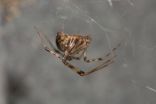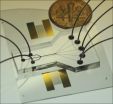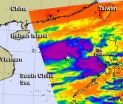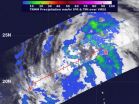(Press-News.org) Starting HIV-infected patients on antiretroviral therapy reduces food insecurity and improves physical health, thereby contributing to the disruption of a lethal syndemic, UCSF and Massachusetts General Hospital researchers have found in a study focused on sub-Saharan Africa.
The study was published this week in the Journal of Acquired Immune Deficiency Syndromes.
With more than 20 million people infected with HIV/AIDS and almost 240 million people lacking access to enough food, sub-Saharan Africa is experiencing co-epidemics of food insecurity and HIV/AIDS that intensify the vulnerability to and increase the severity of each other, creating a deadly vicious cycle, researchers noted.
Food insecurity enhances the risk of HIV transmission by driving risky sexual behaviors, fostering practices that increase mother-to-child transmission of HIV, and contributing to poor nutrition and micronutrient deficiencies that diminish mucosal integrity and weakens the body's overall ability to resist infection.
For those infected with HIV, food insecurity is associated with higher rates of opportunistic infections, poorer immune responses, declining mental and physical health and higher risk of death. In turn, HIV infection worsens food insecurity due to death and illness of productive family members and increased caregiver burdens. Further, illness and stigma related to HIV/AIDS can make finding and performing work harder and diminish social network support for finding food in times of scarcity.
"HIV makes people sicker and, as a result, accessing food becomes progressively more difficult. Antiretroviral therapy makes HIV-infected people feel better and makes them stronger physically – helping them to improve food security – in part because they are better able to work and to engage in food-generating activities," said the study's principal investigator, Sheri Weiser, MD, assistant professor of medicine in the UCSF HIV/AIDS Division at San Francisco General Hospital and Trauma Center.
The study, conducted in Uganda, followed 228 untreated HIV-infected patients for up to three years. More than 80 percent had some level of food insecurity and more than 40 percent were severely food insecure at baseline. Once therapy was initiated, food insecurity declined and nutritional status and physical status increased in parallel with time on therapy.
"Ideally, we would intervene with therapy early to interrupt this vicious cycle before it starts," said the study's senior author, David R. Bangsberg, MD, MPH, director of the Center for Global Health at Massachusetts General Hospital.
Along with a study published last year showing a potent prevention benefit from treatment—HIV-infected participants on therapy reduced their risk of transmitting HIV to their uninfected partners by 96 percent in the study—these findings provide additional evidence supporting initiating treatment with antiretrovirals as soon as possible after diagnosis, he said.
"In addition to improving health and decreasing HIV transmission, our study adds to the growing evidence that treating with ART is cost-effective by improving health and productivity over the long term," he concluded.
While antiretroviral therapy is necessary, it is not sufficient for reversing the negative impacts of food insecurity, said Weiser. Many HIV-infected patients on therapy still struggle with food insecurity, which is prevalent at high rates not only for our patients, but also for the population in general.
"We have also shown in other work that food insecurity leads to worse outcomes for HIV-infected patients," added Weiser. Weiser and Bangsberg concluded that to best address these overlapping epidemics, programs targeting food insecurity should be integrated into HIV treatment programs.
INFORMATION:
Co-authors include Reshma Gupta from the University of Washington, Edward A. Frongillo from the University of South Carolina, Alexander C. Tsai from the Center for Global Health at Massachusetts General Hospital, Elias Kumbakumba and Annet Kawuma from the Mbarara University of Science and Technology, Peter W. Hunt and Jeffrey Martin from UCSF, and Nils Grede from United Nations World Food Programme.
Funding for the research was provided by the National Institutes of Health, the Tim and Jane Meyer Family Foundation, and the World Food Programme.
The UCSF Division of HIV/AIDS at San Francisco General Hospital and Trauma Center is affiliated with the AIDS Research Institute (ARI) at UCSF. UCSF ARI houses hundreds of scientists and dozens of programs throughout UCSF and affiliated labs and institutions, making ARI one of the largest AIDS research entities in the world.
UCSF is a leading university dedicated to advancing health worldwide through advanced biomedical research, graduate level education in the life sciences and health professions, and excellence in patient care.
Follow UCSF on Twitter @ucsf/@ucsfscience
END
STANFORD, Calif. — In the wilds of Africa, when it's time for a family of elephants gathered at a watering hole to leave, the matriarch of the group gives the "let's-go rumble" — as it's referred to in scientific literature — kicking off a coordinated and well-timed conversation, of sorts, between the leaders of the clan.
First, the head honcho moves away from the group, turns her back and gives a long, slightly modulated and — to human ears — soft rumble while steadily flapping her ears. This spurs a series of back and forth vocalizations, or rumbles, within the group ...
MINNEAPOLIS / ST. PAUL (10/02/2012) —A team of scientists and engineers at the University of Minnesota has invented a unique microscale optical device that could greatly increase the speed of downloading information online and reduce the cost of Internet transmission.
The device uses the force generated by light to flop a mechanical switch of light on and off at a very high speed. This development could lead to advances in computation and signal processing using light instead of electrical current with higher performance and lower power consumption.
The research results ...
Akron, Ohio, Oct. 2, 2012 — While the common house spider may be creepy, it also has been inspiring researchers to find new and better ways to develop adhesives for human applications such as wound healing and industrial-strength tape. Think about an adhesive suture strong enough to heal a fractured shoulder and that same adhesive designed with a light tackiness ideal for "ouch-free" bandages.
University of Akron polymer scientists and biologists have discovered that this house spider — in order to more efficiently capture different types of prey — performs an uncommon ...
MINNEAPOLIS / ST. PAUL (10/02/2012) —Plants' ability to absorb increased levels of carbon dioxide in the air may have been overestimated, a new University of Minnesota study shows.
The study, published this week in the journal Nature Climate Change, shows that even though plants absorb large amounts of carbon dioxide and actually can benefit from higher levels of it, they may not get enough of the nutrients they need from typical soils to absorb as much CO2 as scientists had previously estimated. Carbon dioxide absorption is an important factor in mitigating fossil-fuel ...
UNIVERSITY PARK, Pa. -- A technique that uses acoustic waves to sort cells on a chip may create miniature medical analytic devices that could make Star Trek's tricorder seem a bit bulky in comparison, according to a team of researchers.
The device uses two beams of acoustic -- or sound -- waves to act as acoustic tweezers and sort a continuous flow of cells on a dime-sized chip, said Tony Jun Huang, associate professor of engineering science and mechanics, Penn State. By changing the frequency of the acoustic waves, researchers can easily alter the paths of the cells.
Huang ...
A study of widely used complimentary offers at Atlantic City casinos finds that common giveaways such as free rooms and dining credits are less profitable – and lead to unhealthy competition among casinos – than alternative comps such as free travel and parking.
The research, co-authored by Seul Ki Lee, an assistant professor at Temple University's School of Tourism and Hospitality Management, analyzed monthly promotional allowance and expenditure data from 11 casinos in the Atlantic City market from 2008 to 2010. Atlantic City is the second largest gaming market in ...
TALLAHASSEE, Fla. - Despite a shared Latino heritage, there are significant differences in the overall health and the use of health-care services among Cuban-Americans, Mexican-Americans and Puerto Rican-Americans — even between men and women in the same subgroup — according to two recently published studies by Florida State University researchers.
The authors, led by College of Social Work Professor and Associate Dean Amy L. Ai, evaluated the physical and behavioral health, as well as the health care service usage, of all three major Latino subgroups in the United States. ...
LOS ANGELES (Oct. 2, 2012) – Researchers at Cedars-Sinai's Maxine Dunitz Neurosurgical Institute have found that a blood vessel-building gene boosts the ability of human bone marrow stem cells to sustain pancreatic recovery in a laboratory mouse model of insulin-dependent diabetes.
The findings, published in a PLOS ONE article of the Public Library of Science, offer new insights on mechanisms involved in regeneration of insulin-producing cells and provide new evidence that a diabetic's own bone marrow one day may be a source of treatment.
Scientists began studying ...
Infrared NASA satellite imagery revealed that the strongest thunderstorms within Tropical Storm Gaemi in the western North Pacific Ocean were located around the storm's center and in a band of thunderstorms east of the center.
On Oct. 2, 2012 at 1500 UTC (11 a.m. EDT) Tropical Storm Gaemi had maximum sustained winds near 40 knots (46 mph/74 kph). It was located about 515 nautical miles (592 miles/954 km) east of Hue, Vietnam, near 15.3 North latitude and 116.7 East longitude. Gaemi is moving to the southeast at 9 knots (10 mph/16.6 kph).
Infrared imagery from the AIRS ...
Wind shear is pushing the heaviest rainfall within Tropical Storm Maliksi east of the storm's center, and NASA's TRMM satellite captured it on Oct. 2 as it passed overhead from space.
When NASA's Tropical Rainfall Measuring Mission (TRMM) satellite passed over Tropical Storm Maliksi on Oct. 2 at 1206 UTC (8:06 a.m. EDT), the precipitation radar instrument detected light rainfall occurring over most of the storm. The heaviest rainfall was moderate was falling east of the center at a rate between .78 to 1.57 inches/20 to 40 mm per hour. There was a small area of heavy rainfall ...




